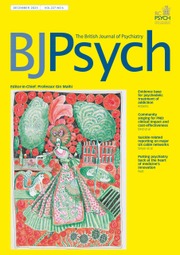The article by Thomassen et al (Reference Thomassen, Vandenbroucke and Rosendaal2001) relates a higher risk of venous thrombosis to the use of antipsychotic drugs. As mentioned by the authors, their data cannot consequentially link the risk of venous thrombosis to antipsychotic use as certain biases cannot be excluded from the autopsy date and case—control studies they analyse. However, their study adds to the numerous reports suggesting a link between this class of medication and venous thrombosis. In this debate, however, it should be noted that there is a lack of controlling for factors such as the dose of antipsychotics and the type of psychosis. Catatonia is typically a form of schizophrenia in which one could expect patients to have a higher risk of venous thrombosis (Reference Morioka, Nagatomo and YamadaMorioka et al, 1997). Similarly, according to the dose of antipsychotic, the sedation of patients can be so intense that their movements are limited, creating predisposing conditions for venous thrombosis. It is possible that more cautious administration of antipsychotics at a dose which decreases the psychotic symptoms without inducing toxic sedation (Reference CaseyCasey, 1997) could prevent a certain number of thrombosis cases, although low doses of antipsychotic appeared paradoxically associated with higher risk in a recent case—control study (Reference Zornberg and JickZornberg & Jick, 2000). Exploring the role of these potential confounding factors, particularly in cohort studies, is important to characterise the safety profile of antipsychotic drugs and to improve guidelines for the treatment of patients with psychosis.
No CrossRef data available.



eLetters
No eLetters have been published for this article.